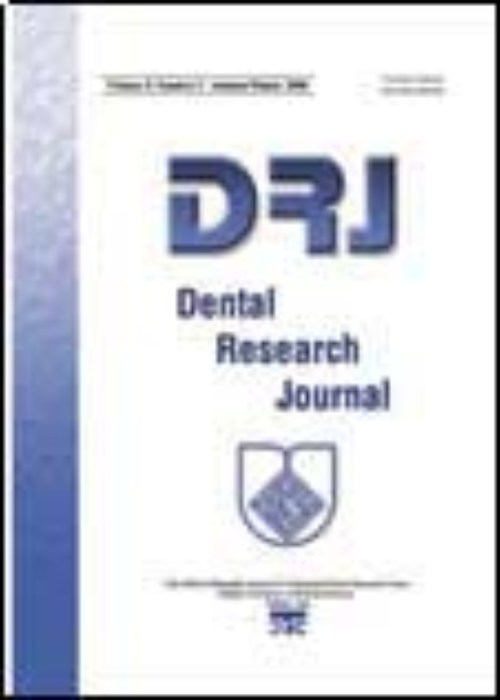Effect of curing method and thermocycling on flexural strength and microhardness of a new composite resin with alkaline filler
Cention N has been introduced as an alternative material for amalgam. The purpose was to investigate the flexural strength and microhardness of this material in self‑cure and dual‑cure modes before and after thermocycling.
In this experimental study, 40 samples of Cention N were prepared in order to determine and compare the microhardness. Half of the samples were set by self‑cure method and the other half with dual‑cure method. The Vickers microhardness test was performed once after 24 h and again after 10000 thermocyclings. Three‑point flexural test was used to determine and compare the flexural strength of 52 rod‑shaped samples. Half of the samples were set by self‑cure method and the other half with dual‑cure method. Among 26 samples in each group, 13 samples were randomly selected and three‑point flexural test was performed after 24 h and for another 13 samples after 10,000 thermocyclings. Data were analyzed using two‑way ANOVA and paired samples t‑test (P < 0.05).
There was a statistically significant difference between the mean of microhardness values in two curing methods (P < 0.001) and in two storage conditions (P < 0.001). The mean of dual‑cure microhardness (100.99 ± 7.22) was higher than that of self‑cure (64.61 ± 12.51) and the mean value associated with pre‑thermocycling (89.75 ± 15.84) was higher than that of the post‑thermocycling (76.44 ± 23.56). There was no statistically significant difference between the mean flexural strength in the two curing methods (self‑cure [72.85 ± 16.26], dual cure [79.87 ± 23.07]; [P > 0.05]). However, the mean flexural strength without thermocycling (85.98±21.74) was higher than that of the thermocycled group (64.24±6.40)(P<0.001).
The microhardness of Cention N in dual‑cure mode was higher than that of self‑cure mode, but the flexural strength of dual‑cure was not significantly different from that of self‑cure. Thermocycling had a significant effect on the microhardness and flexural strength.
- حق عضویت دریافتی صرف حمایت از نشریات عضو و نگهداری، تکمیل و توسعه مگیران میشود.
- پرداخت حق اشتراک و دانلود مقالات اجازه بازنشر آن در سایر رسانههای چاپی و دیجیتال را به کاربر نمیدهد.


